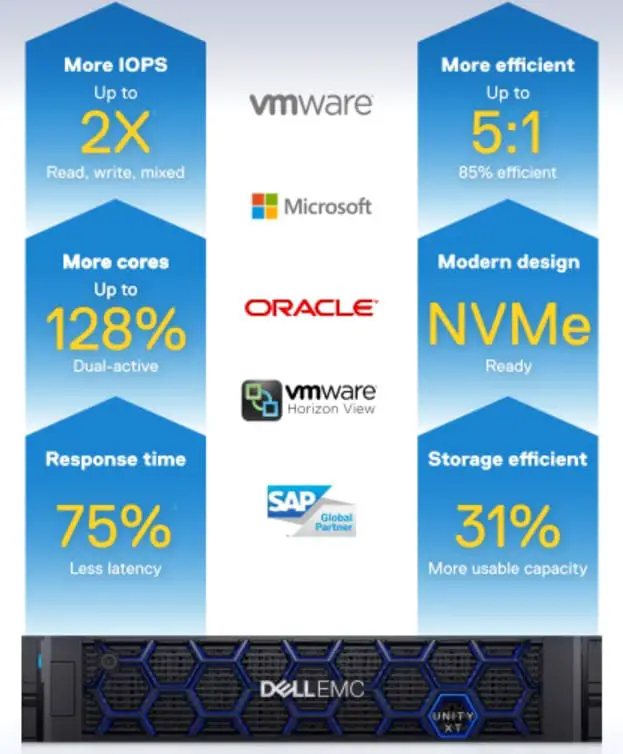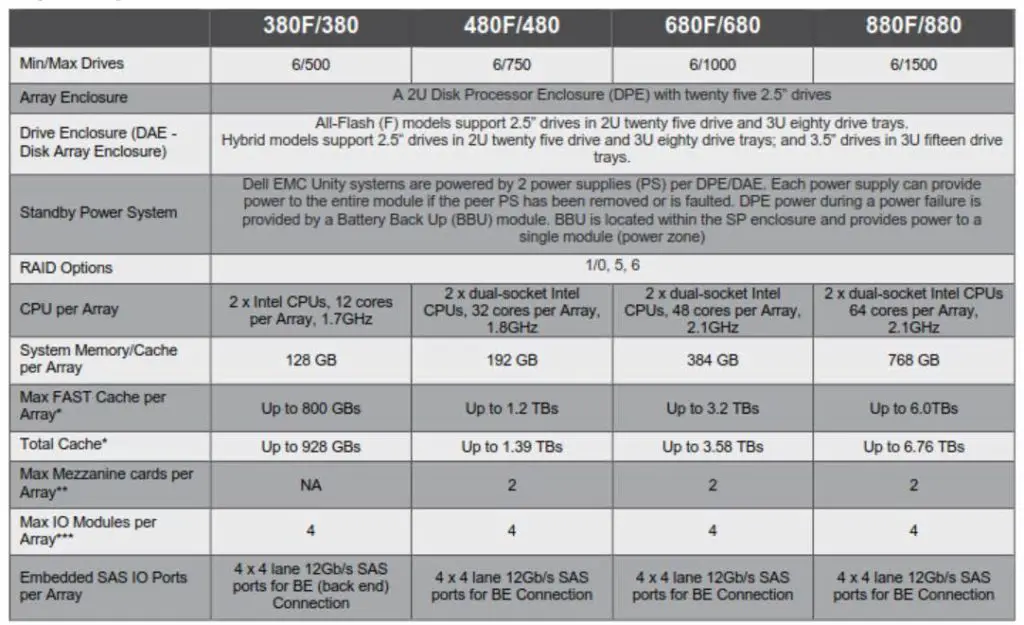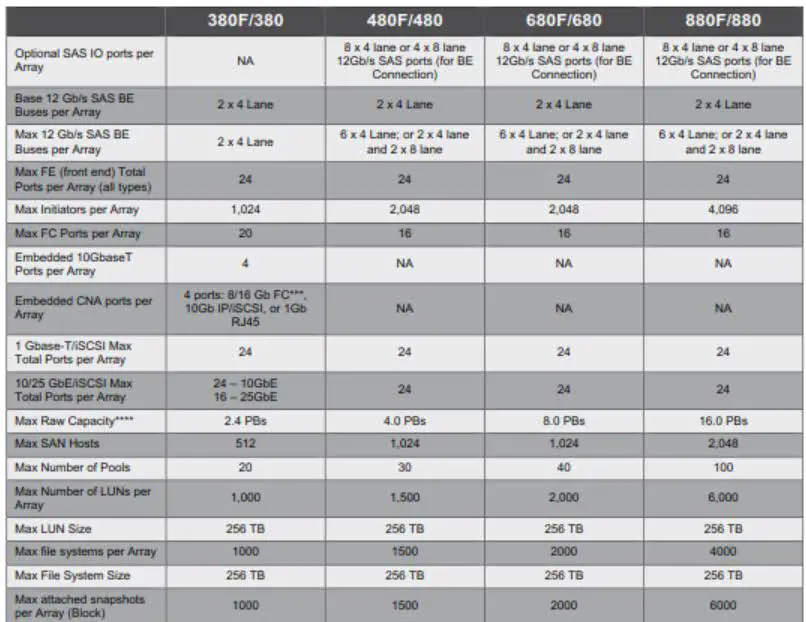What’s Dell EMC Unity XT Storage?
Simplify the path to IT transformation and unlock the full potential of your data capital with the new Dell EMC Unity XT
storage arrays that feature up to 2X more IOPS, more memory, and up to 50% more drives than previous Dell EMC
Unity models. These All-Flash and Hybrid storage systems with dual-active controller architecture and enterprise-class
features are designed for performance, optimized for efficiency with up to 5:1 data reduction, and built to simplify your
multi-cloud journey.
Dell EMC Unity XT Architecture
The Unity Next Generation Platform refresh, also known as the Unity XT Series, consists of 8 new hardware models, including 4 Hybrid Flash and 4 All Flash configurations the Dell EMC Unity 380, 380F, 480, 480F, 680, 680F, 880, and 880F. The XT series increases
performance of I/O, maximizes storage efficiency features like Advanced Data Reduction with inline deduplication, and supports a 25Gb interface card.
The Unity 380(F) is based on the existing platform today for the 350F model, but with additional memory (64GBs per SP). The Unity 480/F, 680/F, and 880/F are built on an Intel Skylake platform.
The Unity XT series supports Advanced Data Reduction in both dynamic and traditional pools in All Flash (F) models, and All Flash pools in Hybrid models.
Based on the powerful family of Intel Xeon processors, Dell EMC’s Unity XT storage systems implement an integrated architecture for block, file, and VMware VVols with concurrent support for native NAS, iSCSI, and Fibre Channel protocols. Each system leverages dual storage processors, full 12 Gb SAS back end connectivity and Dell EMC’s patented multicore architected operating environment to deliver unparalleled performance & efficiency. Additional storage capacity is added via Disk Array Enclosures (DAEs).
Hardware Specifications
using 2 sockets per storage processor is biggest difference with older models. Also memory per SP is more than previous models, result of increasing compute resource is increasing storage maximum IOPS.
The below tables are useful information about Dell EMC Unity XT series:
For more information see the specification sheet:
Dell EMC Unity XT Storage Series Spec Sheet
Notable differences With Other Unity Platform Models
The Unity XT 480/F, 680/F, and 880/F models have the following notable physical differences from the other Unity platform models:
Electrical Specifications:
Unity XT 480/F, 680/F, and 880/F DPE power figures range between 100 to 240 VAC ± 10%, single phase, 47 to 63 Hz representing a product configuration with max normal values operating in an ambient temperature environment of 20°C to 25°C.
The chassis power numbers may increase when operating in a higher ambient temperature environment. Refer to the Dell EMC Unity XT Series data specification sheet for your system for additional details on power requirements.
Rack Depth and Enclosure Weight:
The new DPE is 31.2 inches (79.55 cm) deep, requiring an additional seven inches of rack depth compared to existing 25-drive DPE Unity models and the Unity 380/F, which are 24 inches (60.96 cm) deep.
The new DPE (unpopulated) is a base weight of 54 pounds (25.9 kg), compared to the existing 25-drive DPEs and the Unity 380/F DPE, which have a base weight of 44 pounds (20 kgs).
DAE Addressing:
The bus number of the new DPE is separate from the DAE address labeling, meaning the DPE itself is not labeled as bus 0, but is bus 99. Connecting the first DAE to expansion port 1 of the DPE creates back-end bus 1. The enclosure address of the first DAE is 1_0.
Connecting a second DAE to DPE expansion port 0 to extend back-end bus 0 (BE0) designates the DAE as enclosure 0 of bus 0, and its enclosure address is BE0 EA0 (0_0) For all other Unity models, this DAE is enclosure 1 of the bus, and its enclosure address is BE0 EA1 (0_1).
Drive Compatibility
Moving drives from existing Dell EMC Unity models to Dell EMC Unity XT x80/F models, or moving drives from Dell EMC Unity XT x80/F models to existing Dell EMC Unity system models, is not supported. This is to ensure the new Unity XT arrays are configured with drives qualified with its new platform, and ensures optimal performance, longevity, and Support response with planned spares infrastructure.
Further Reading
EMC Unity Operating Environment 4.5.1.0.5.001
WWN Address in EMC Unity: Best Way to Find













